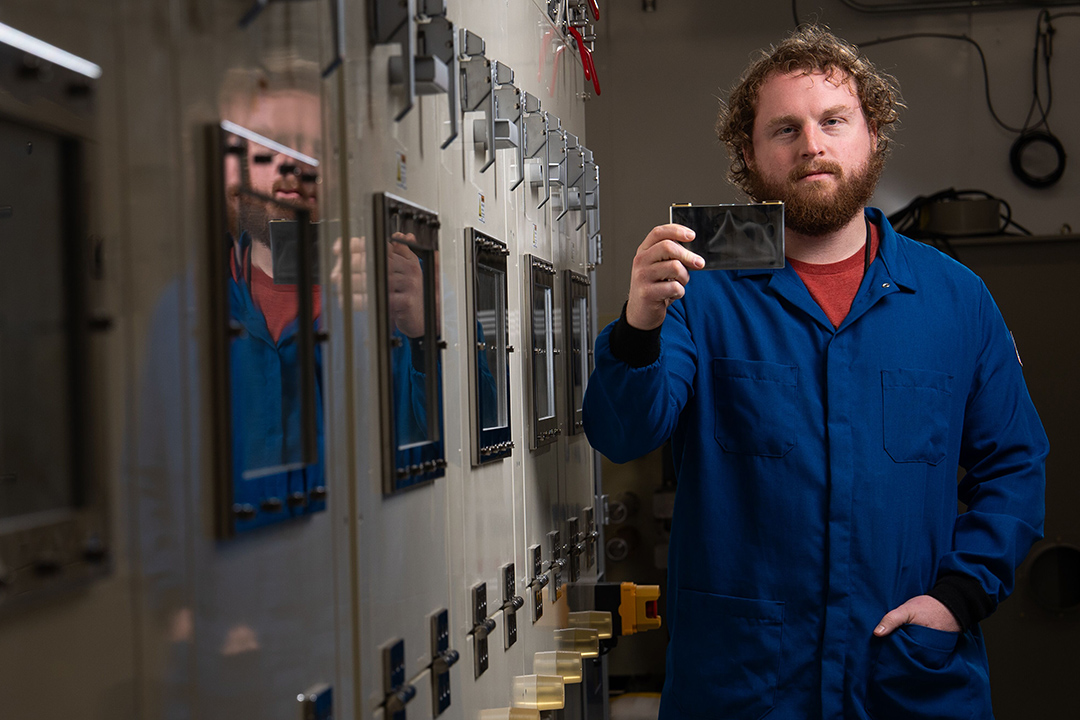
Grid Energy
Storage
Grid Energy
Storage
Storing energy for a
resilient, reliable power grid
Storing energy for a
resilient, reliable power grid
An organic molecule used in dyes and antibiotics may be the key to less expensive, more efficient redox flow batteries. Scientists at the Department of Energy’s Pacific Northwest National Laboratory (PNNL) developed a highly reversible, water soluble material based on phenazine. The compound could serve as an alternative to vanadium, which is used in grid-scale batteries to store electricity.
Andrea Starr | Pacific Northwest National Laboratory
Like a savings account for the electric grid, energy storage neatly balances electricity supply and demand. When energy generation exceeds demand, energy storage systems can store that excess energy until electricity production drops and the energy can be deposited back to the power grid. However, for widespread deployment of grid energy storage to occur, the research community must continue to investigate and improve ultra-low-cost materials and chemistries capable of long-term deployment.
Much of PNNL’s grid energy storage research is managed by the DOE’s Office of Electricity’s Energy Storage Program, whose mission is to use research and development to strengthen and modernize our nation's power grid to maintain a reliable, affordable, secure and resilient power grid. Energy storage experts at PNNL are helping to accomplish this mission by reducing barriers like higher costs and limited storage capacity and providing more cost-effective power for consumers.
Grid Energy Storage @ PNNL

Advancements in energy storage are critical to the resilience of the electric grid, our most complex machine.
Learn how the grid powers America
Energy storage offers an exciting opportunity to increase energy affordability, improve energy security, and usher in a new chapter in grid modernization. PNNL accelerates grid-scale energy storage research within Grid Storage Launchpad, encompassing 93,000-square feet of lab space dedicated to technology research and development. The highly integrated capabilities of the GSL—from fundamental analysis of battery materials to 100 kW scale testing of commercial systems—are accelerating innovation and technology breakthroughs in grid and transportation technologies. These advancements help meet the nation’s emerging energy needs, making energy more accessible and strengthening U.S. competitiveness in the global energy market.
The GSL brings all phases of the battery development and deployment cycle under one roof. This fully integrated facility encourages collaboration among researchers across disciplines, all driven by a singular mission to make our nation's power grid safer and more secure. Collaboration enabled by GSL also supports industry partners who wish to demonstrate and deploy energy storage technologies and educate grid energy storage professionals. Fast prototyping and comprehensive testing of the entire energy storage development cycle are features not found anywhere else within the national laboratory system.
One of the exciting benefits of the GSL for researchers at PNNL and their collaborators is the access to the powerful analytical capabilities of the Electricity Infrastructure Operations Center (EIOC), located within walking distance of the GSL on the PNNL-Richland campus. This control room environment at PNNL is designed for power grid operations, offering researchers firsthand insights into how well grid-scale energy storage batteries perform under realistic operating conditions. The EIOC and the GSL work hand in hand, with the EIOC simulating various grid scenarios and the GSL testing and refining battery performance. This collaborative approach allows for top-down modeling and specific application testing, making it possible to validate energy storage technologies and assess their impact on the grid effectively.

